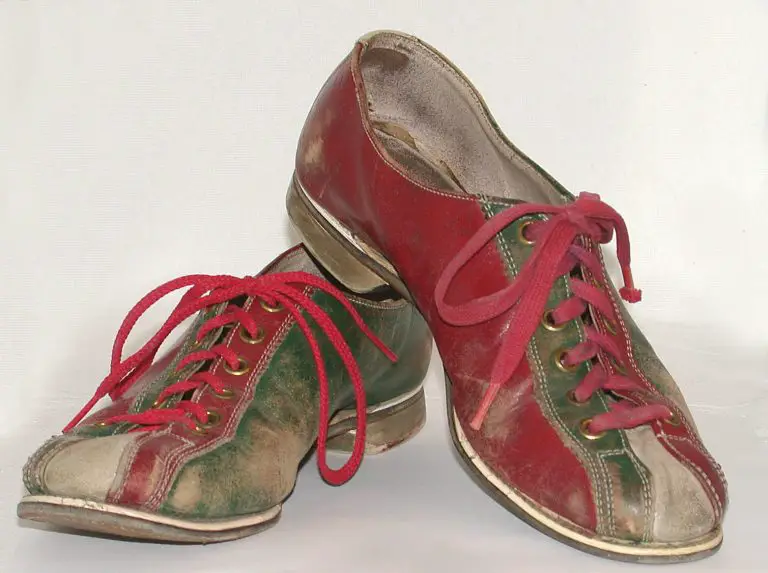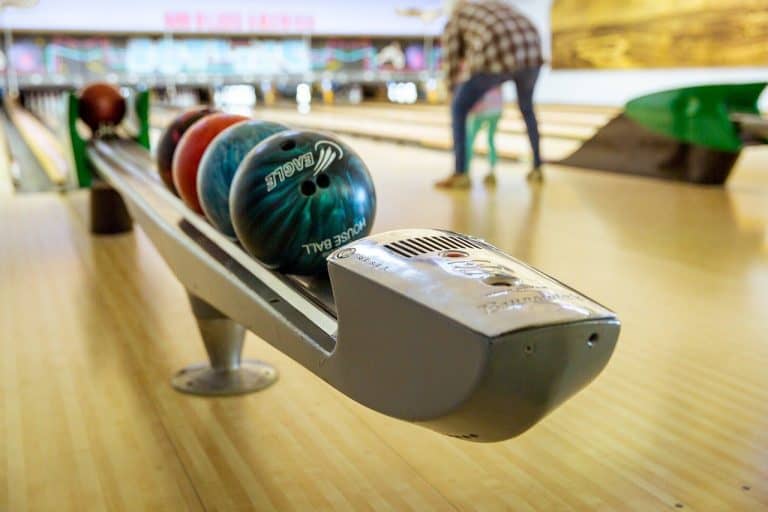How To Take A Bowling Ball On A Plane: What You Must Know
Flying has become such a risky mode of travel for most people. To travel with your trusty bowling ball probably makes you even more apprehensive, but this doesn’t have to be so horrifying. By just doing your homework and preparing yourself, the journey will be much less scary.
You can travel by airplane with your bowling ball according to the rules set out by the Transportation Security Administration (TSA). It has to be brought on as a carry-on bag and will be subject to extra screening by an airport official who will have the final authorization before you may embark.
Traveling with your bowling balls is actually much less complicated than you might think. Here is how to make it effortless and stress-free.
Can I Take Bowling Balls On An Airplane?
In the aftermath of 9/11, the TSA (Transportation Security Administration) was created to ensure that the nation’s transportation system was more safely secure while the travelers’ movements were not too restricted. Their guidelines prescribe it is safe to travel with bowling balls because they are not considered a bludgeon item. However, bowling balls are heavy and inconvenient to carry if you choose to bring them along on your trip. The easiest option is to equip yourself with a customized tote bag made specially to carry your balls and take them as carry-on luggage.
Although bowling balls are allowed on an airplane according to the specifications of the TSA, that doesn’t mean that all airport security officials need to allow you without a proper search. You will need to subject your carry-on to additional screening if required by the checkpoint agent. If it triggers an alarm because it appears to have been tampered with, it might involve certain fines and substantial delays for you and the other travelers. Therefore, make sure you visit the TSA’s official website in preparation before your travel.
What Are The Dimensions Of A Bowling Ball?
Bowling is one of America’s favorite past times and a highly competitive sport. According to the USBC (United States Bowling Congress) and World Bowling, the physical requirements for a bowling ball are more than 6 pounds (2.72 kg) and less than 16 pounds (7.3 kg), with a diameter of 8.500 – 8.6 inches (21.6 – 21.8 cm). Children generally use the lighter balls. And women occasionally use a lighter ball than their male counterparts, who prefer bowling balls of 2 or 3 pounds heavier. As a general rule, the bowling ball should weigh 10 percent of your body weight.
Most house balls are made of polyester, but if you want to invest in a personalized ball, you may encounter cover materials like plastic, urethane, reactive resin, and particle or proactive coverstock. These elements lend degrees of performance to your game and make the difference in how the ball reacts to the lane surface. The bowling balls are so heavy because the ball’s inner core consists of hardened matter made of powdered metal oxides mixed with resin. The bowling apparatuses contain a weight block to influence the ball’s roll and potentially boost your game.
All these ingredients add to a very heavy traveling companion and require planning and organization to ensure your bowling balls reach your destination safely and securely.
Can Bowling Balls Explode?
A bowling ball will not necessarily explode during normal circumstances because the materials are designed to contract and expand as the temperature fluctuates. Your equipment is meant to be stored below temperatures of 140 degrees Fahrenheit (depending on the manufacturer, a few of them require storage below 125 degrees.) Drastic heat changes might cause the ball to crack, but since aircraft maintain their interior atmosphere at about 73 – 77 degrees Fahrenheit, it shouldn’t affect your bowling balls.
However, if a bowling ball is engulfed in fire, the chances are that it might explode into fragmented shards. The air pockets in the cover materials of the ball will crack and pop out from the intense heat. Alternatively, if it should experience extreme cold, it might also crack and shatter.
How To Safely Pack Your Bowling Balls.
As stated on the official TSA website, you are allowed to transport your bowling balls as a carry-on when you fly from one destination to the next. Whether you make use of a tote bag, a shoulder bag, or a roller, you should make sure your balls are securely packed so they will not be a hindrance to you when you’re traveling. Here are a few guidelines to remember.
- Make sure you secure the bowling ball in whichever carrier you decide to use. Purchasing the perfect bag to carry your equipment in will remove the stress when traveling and keep your bowling balls safe.
- Invest in appropriate zipper locks to fasten your travel bag. The movement of the flight and the ball’s momentum in the suitcase can pry the bag’s zipper open and cause the ball to drop out unexpectedly.
- To make sure your balls are soundly compact in their tote bag, it’s a great idea to cushion them with soft towels or materials, so they don’t rattle around.
- I know you are very tempted to pack your ball cleaner in the bag probably, but you will not be able to bypass airport security. According to TSA regulations, this is one of the items not allowed in carry-on baggage.
5 Interesting Tips When Traveling With Your Bowling Balls.
Many people who travel with their bowling balls do it because they are professional competitors and require their own equipment to compete. For this reason, the following tips will also be handy during the planning process of your trip.
- Pack your shoes and brace into your carry-on with your bowling ball. If the airline happens to misplace your luggage and you packed those items into your check-in luggage, you run the risk of competing in a tournament without broken-in shoes and a trusty brace. Rather store them with your bowling balls in your tote bag and keep them in the cabin with you.
- You are more than likely to take a few balls with you if you are a serious competitor. If you insist on checking some of them in with your larger luggage, keep at least two personalized balls with you in flight. Once again, should the airline lose possession of your luggage, you will have at least two bowling balls you trust and know.
- Continually weigh your luggage as you pack to keep track of the maximum allowable weight for carry-ons and check-in luggage. Exceeding the restrictions set out by the TSA will probably lead to a hefty fine.
- Remember to pack a copy of your grip. If something should happen to your ball or it should crack during the flight, you should be able to buy a new ball at the tournament and have it custom drilled to your specifications.
- When you go through the security checkpoints, be sure to keep an eye on the weight scale. Not implying that this is a regular oversight, but occasionally the official might fail to zero the scale before weighing your baggage. Just keep calm and politely insist that they do it again.
With What Other Bowling Equipment Can I Travel?
Most professional bowlers are quite attached to their bowling balls. Considering that a bowling ball is specifically drilled to fit their hand and can last about 5-10 years, this is understandable. But with what other equipment can and should you travel?
- Bowling shoes. Probably the most irreplaceable item in your bowling artillery is your shoes. You will not be able to buy a new one right before your tournament and still have a successful game. Bowling shoes require a break-in period of about 1-4 weeks. It would be best to take as much care of your game shoes as you do of your bowling balls.
- Bowling towel. Your bowling towel is a debatable necessity. Some bowlers are content with a rag to clean their bowling balls during a tournament, while others are very attached to their specific clothes. The towel has to be cleaned in a specific way, and some fabrics work better than others to absorb the residue oil on the ball. At least you don’t have to worry about being questioned by a TSA agent about this item when you fly to your destination since it won’t provoke any security risks.
- Ball cleaner. Due to the restrictions by TSA on flying with liquids in your carry-on luggage, this is a definite hazard, and you should leave this at home. Keeping your bowling ball clean and in mint condition is a pristine practice, and many bowlers make their own solution to clean their ball. Dirt and oil get picked up by the pores in the ball, and it influences your game tremendously. However much attached to your cleaning mixture, you won’t be able to bring this along.
- Bowling pins. As per the official TSA website, bowling pins are considered lethal sports objects and can be used to club and injure another person. For that reason, they are not allowed as an item in your carry-on luggage. If you need to travel with it, you will have to check them.
What Alternate Means Can I Use to Travel With My Bowling Ball?
Considering all the extra preparation and security measures you need to take to fly with your bowling balls, it might just be the best option to use an alternative means of travel. The logistics of getting your bowling ball to its destination don’t need to cause you nightmares. Other alternatives for the trip can be one of the following options:
- Depending on your tournament destination’s distance from your home, sometimes the best option is simply traveling by car. It is a much less nerve-racking and convenient way to travel if you have the time and your destination is close enough. Your bowling balls never leave your sight, you don’t have to venture through airport security, and you don’t have to worry about weight restrictions on the journey.
- Traveling to your venue by train is also a much more painless option. Most train services allow two free pieces of carry-on baggage weighing no more than 50 pounds. They also have more space to store your luggage, and the security check is much less relaxed if there are any. Security checks are not a requirement for rail travel in the US.
- Lastly, you also have the option of shipping your bowling equipment to your venue. In many cases, this is probably the least stressful way to ensure that your bowling ball gets to the tournament on time. There are also a few options from which you can choose. You need to meet the shipping company’s weight and package requirements, and they will handle the worrying for you.
How Do You Ship A Bowling Ball?
It has become so easy to ship your bowling balls to your next tournament venue that more and more people have opted for this route. This way, you will bypass all the needless strain of flying with your bowling ball, the uncertainty of knowing if they’ll allow you through the security checkpoint, and the extra heavy baggage you will not have to drag around when you travel.
- United States Postal Service. USPS Priority Mail Cubic (or simply “Cubic”) is by far the most inexpensive way to ship bowling balls. If you try and ship it by using the Post Office, they will weigh your package and charge you according to the weight. Since a bowling ball is probably the heaviest item you’ll ever try to ship, you can expect that the charges will be quite pricy. With Cubic, they charge you based on the dimensions of the package. Generally, a bowling ball can fit into a box of 9x9x9 inches. They deliver within three days and are accompanied by USPS insurance.
- FedEx. Another example of an ideal shipping service is FedEx. Sending packages that weigh more than two pounds is cheaper through FedEx. They have an exemplary tracking system that will allow you some peace of mind if you are nervous about letting your ball out of your sight.
- Bowling Ball Express. Through the increased popularity of the shipping of bowling balls, the USBC has spurred a shipping service that will carry your bowling balls to any USBC sanctioned opens and tournaments at very reasonable rates. Their packages have a weight limit of fifty pounds which reasons that you can send up to three bowling balls in a box. They insure for the loss or damage of your balls, but you will need to comply with strict packing instructions on their website.
Conclusion
At first, when you think about traveling with a bowling ball on an airplane, the mere thought of it caused my blood pressure to rise. But after investigating the matter, it became clear that it’s not as much hassle as one would think. As long as you treat the bowling ball as precious cargo that requires planning and preparation, the trip will become a child’s play.
Sources
https://bowlingforbeginners.com/flying-with-bowling-balls/
https://en.wikipedia.org/wiki/Bowling_ball
https://www.tsa.gov/travel/security-screening/whatcanibring/items/bowling-balls





